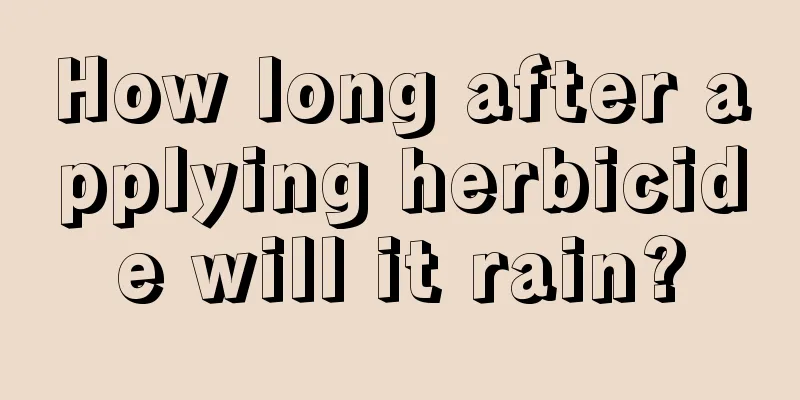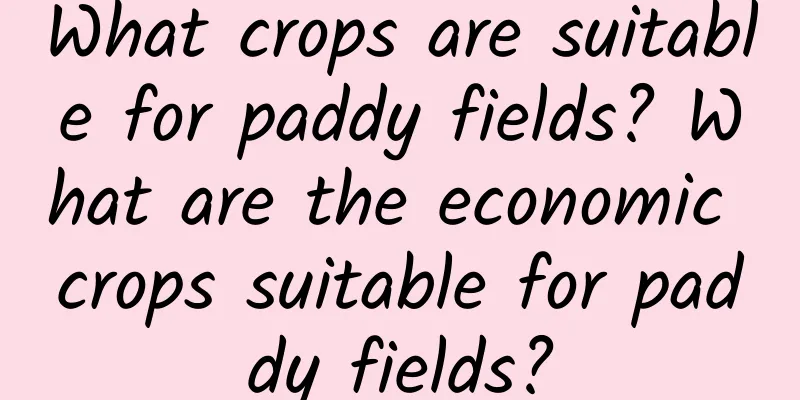How long after applying herbicide will it rain?

|
The use of herbicides is often affected by many factors. For example, weather factors, especially rainfall, often have a direct impact on the effectiveness of herbicides. So how long after applying herbicides will it rain before it's safe? Let’s learn more about it below. How long after applying herbicide will it rain? The effect of rain after herbicide spraying depends mainly on the time interval between spraying and rainfall and the amount of rainfall. 1. Time interval (1) If it rains within 4 hours after spraying, it will usually affect the efficacy of the drug and it is recommended to re-spray. (2) If it rains lightly within 4 to 6 hours after spraying, the effect may be slightly affected, but you can observe the weed situation in the field and then decide whether to re-spray. (3) If it rains more than 6 hours after spraying, it will basically not affect the efficacy of the drug. 2. Rainfall (1) If the rainfall is less than 10 mm, re-spraying is generally not necessary. (2) If the rainfall exceeds 10 mm and the time from spraying to rain does not exceed 8 hours, it is recommended to use half the amount of medicine and re-spray. How to re-spray herbicides after rain? 1. Time selection Wait for the weather to improve and avoid re-spraying on rainy days or when it is about to rain. If you spray again immediately after rainfall, the concentration of the pesticide may be too high, increasing the risk of pesticide damage. 2. Adjustment of medicine If re-spraying is required, it is recommended to reduce the spraying concentration appropriately to avoid excessive use. Consider alternating the use of herbicides with different mechanisms of action from the previous use to reduce resistance and pesticide damage problems. In addition, it is also necessary to distinguish the types of herbicides. For example, herbicides with strong systemic properties (such as thiophanate-methyl, carbendazim, etc.) are more resistant to rain erosion and are less affected by rainfall, and generally do not require re-spraying. 3. Operation method Ensure that the liquid is sprayed evenly to avoid missing or overspraying. At the same time, pay attention to wind direction and speed to prevent the liquid medicine from drifting with the wind and damaging sensitive crops. 4. Safety measures Wear protective clothing, masks, gloves and other protective equipment to ensure the safety of sprayers. Clean the pesticide application equipment to avoid residual pesticide solution from polluting the environment and crops. In general, most herbicide manufacturers will clearly mark the recommended dry-free period and safe period on the product label, which generally ranges from a few hours to a few days. Be sure to understand it clearly before use to avoid the impact of rainy weather.
|
<<: How and when to plant winter spinach
>>: How to plant Platycodon grandiflorum
Recommend
What flowers are suitable for growing in Tongliao? What are the city flowers and trees?
1. Climate characteristics of Tongliao Tongliao h...
Can blue snowflakes survive the winter outdoors?
1. Can you spend the winter outdoors? The blue sn...
When is the right time to plant garlic?
September is usually the golden period for garlic...
What to do if the leaves of bougainvillea wilt
1. Lighting We all know that it is a positive flo...
What are the benefits of keeping Michelia at home?
The role of Michelia : indoor viewing Michelia ha...
How to fertilize roses so that they bloom more beautifully!
Fertilization methods When to fertilize First, le...
How many years has Nanfeng mandarin orange been bearing fruit?
Introduction to Planting Nanfeng Mandarin Oranges...
Why doesn't the water lily bloom at home?
The lotus does not bloom because of insufficient ...
Suitable climate and temperature for growing ugli oranges
Ugly orange planting conditions Ugly orange is a ...
What size pot should be used for peacock grass and how to water it
1. Use a basin When planting cosmos, you don’t ne...
Zhengzhou post-00s freshmen carry fertilizer bags to college with full confidence
Recently, a video of a post-2000 freshman using f...
How to prepare the soil for the fortune tree
1. Requirements for soil (1) First of all, the ai...
How to plant pepper tree seeds
The seeds of the Chinese prickly ash tree mature ...
The profit and cost of growing golden cicadas on one acre of land (how much money can be made from breeding golden cicadas on one acre of land)
Analysis on the Benefit and Cost of Cicada Breedi...
Tomato planting technology and management methods
Tomatoes are an output that everyone is familiar ...









